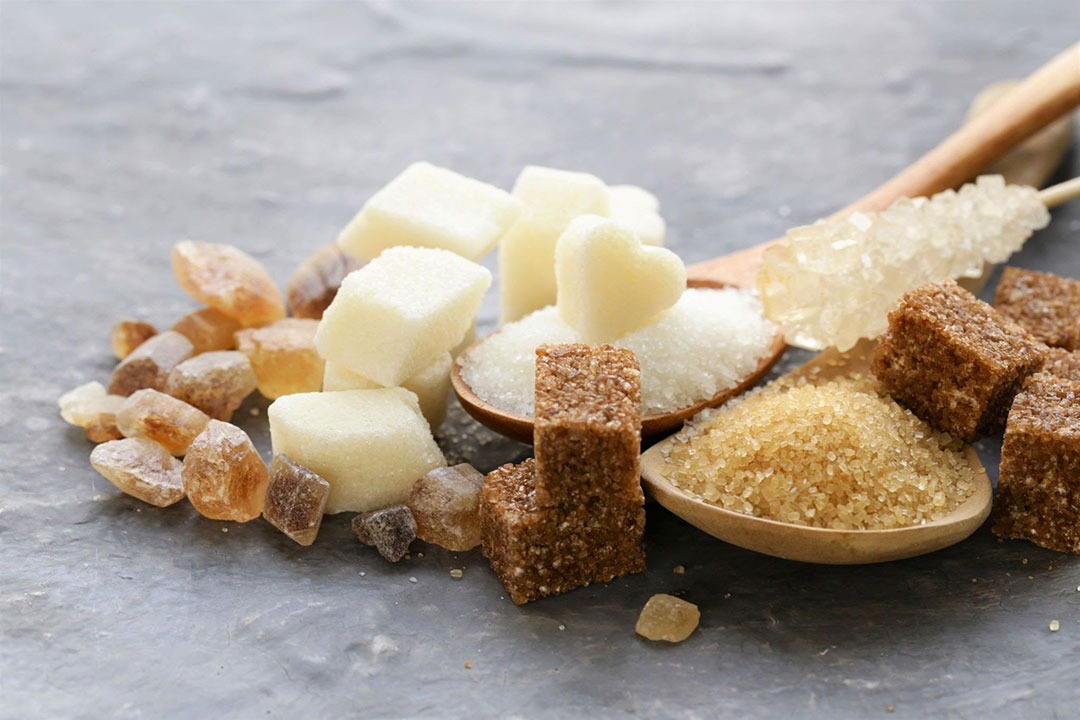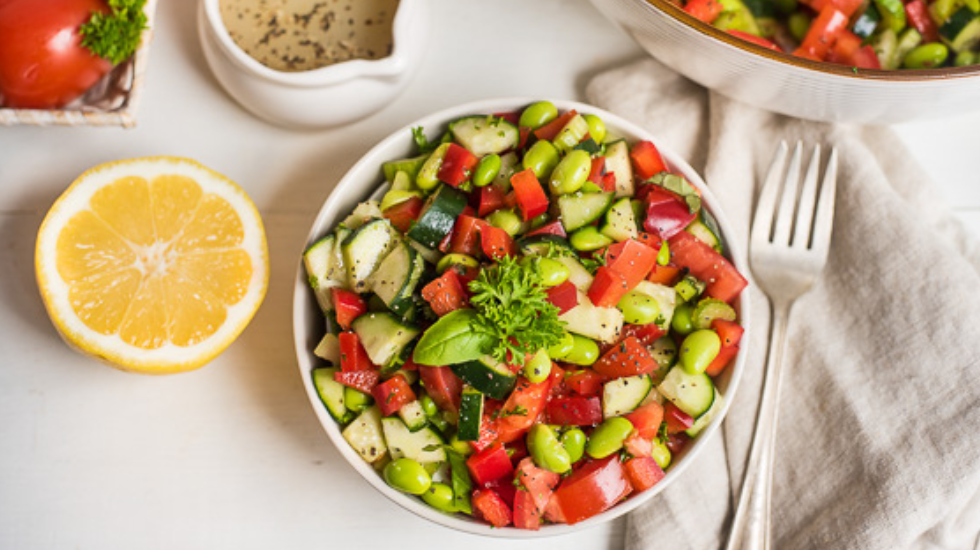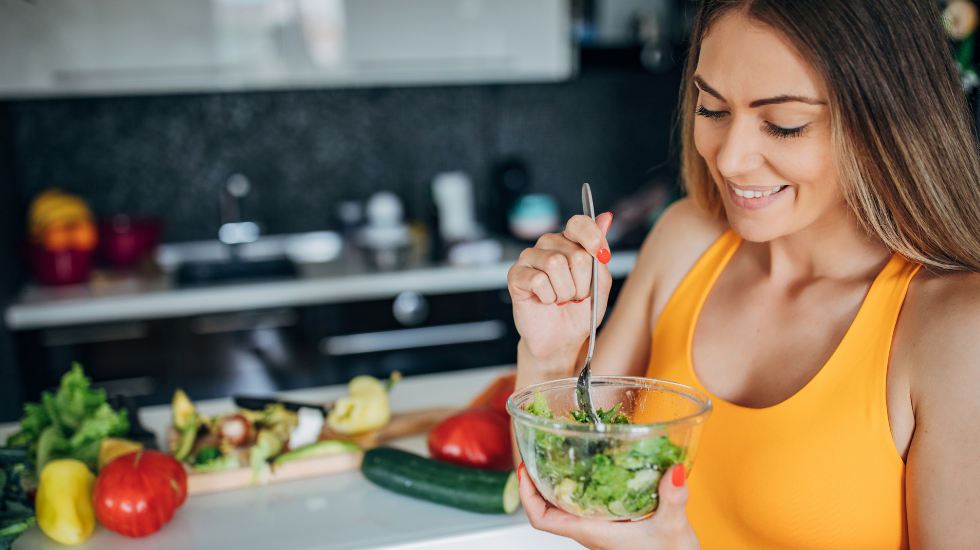Ever tried to burn belly fat by eating clean, exercising daily, and still felt like nothing was changing?
This kind of resistance is often your body’s way of asking for a different kind of support.
Belly fat is more than just a cosmetic concern! It’s often a signal from your body, a gentle (or not-so-gentle) nudge that something deeper is out of balance.
Unlike other areas of the body, fat stored around your midsection is closely linked to stress, toxic buildup, and hormone imbalances. That’s why simply “eating less” or “working out more” often doesn’t move the needle.
In this guide, we’ll explore the real reasons why belly fat can be so stubborn, and most importantly, how to support your body with nourishing habits, healing foods, and natural tools to feel lighter, healthier, and more at home in your skin.

Why Belly Fat Is So Stubborn (And What Your Body Might Be Telling You)
You may be eating clean, moving your body, and doing “all the right things,” and yet… that extra weight around your middle doesn’t budge.
Retaining fat around your stomach is often a sign of toxic buildup in your system. When your body is toxic from chemicals in the foods you eat and your environment, it seeks to protect you as best it can.
When your system is overloaded, whether it’s from toxins in processed foods, emotional stress, lack of sleep, or even environmental chemicals, your body holds onto belly fat as a form of protection. Fat around the abdomen acts as a buffer, a safe space to store excess toxins and reduce their impact on your more delicate organs.
So, if you’re carrying extra weight in your belly, it might not be about willpower. It might be about imbalance, like elevated cortisol (your stress hormone), insulin resistance from blood sugar fluctuations, or poor gut health affecting your digestion and metabolism.
How to Tell the Difference Between Bloating and Belly Fat
It’s easy to look in the mirror and assume that any puffiness around your middle is just stubborn belly fat. But that’s not always the case.
Bloating and belly fat may look similar, but they’re not the same thing.
- Bloating is often caused by digestive issues, such as gas buildup, poor food combining, constipation, or even a sensitivity to certain foods like gluten or dairy. It can come and go within hours or days, and may leave you feeling tight, uncomfortable, or overly full—even if you haven’t eaten much.
- Belly fat, on the other hand, is more long-term. It tends to develop over time due to things like hormonal imbalances (especially cortisol and insulin), poor sleep, stress, and a lack of consistent, nourishing habits.
Why does this matter? Because understanding the difference helps you take the right steps forward.
One unique tool I’ve come to appreciate
One unique tool I’ve come to appreciate is Fatty15, a science-backed essential fatty acid that helps support your metabolism on a cellular level. It’s not just a fat source, but a metabolic activator that helps your body burn fuel more efficiently instead of storing it.
It works by activating two key metabolic pathways: AMPK, known as your body’s “metabolic master switch,” which helps your body burn stored fat more efficiently and use energy with greater ease. AKT, which supports balanced blood sugar and healthy insulin sensitivity to help reduce fat storage.
The result?
- Stable, sustained energy
- Less bloating
- Better metabolic flow from the inside out
Use code KIMBERLY for 15% off Fatty15 and give your cells a little extra love.
Simple Detox Habits for a Lighter, Flatter Belly
If bloating is your issue, supporting digestion is key! Think: digestive enzymes, probiotics, and simple, clean meals with plenty of fiber and water.
Detoxifying your gut, then, is a great step towards losing weight in your abdominal area. Helping to cleanse our bodies is a huge bonus!
Let’s look at some steps you can take to help your body detox. Detoxifying doesn’t have to be complicated or tedious! A quick change in your habits can make a huge difference for your overall health, and your belly as a result.
1. Minimize Processed and Fast Foods
Processed and fast foods may be convenient, but they’re often loaded with low-quality fats, additives, excess sodium, and hidden sugars.
These ingredients can create inflammation in the body, slow your metabolism, and make digestion feel heavy or sluggish.
Your body deserves real, whole food made with love, not just “filler” calories!
2. Eliminate Refined Sugar
Refined sugar is one of the biggest culprits when it comes to stubborn belly fat. It spikes blood sugar and insulin, encourages your body to store fat (especially in the midsection), and feeds unbalanced gut bacteria that can throw off your entire system.
Not to mention it fuels inflammation, mood swings, and cravings.
Instead, reach for naturally sweet foods like fruit, dates, or a little raw honey when you want something sweet, your body and your skin will thank you!
3. Swap Carbonated Beverages and Energy Drinks for Pure, Fresh Water
It may seem like a small shift, but replacing carbonated and artificially flavored drinks with clean water can have a big impact. Fizzy and sugary drinks often contribute to bloating, disrupt your body’s hydration levels, and introduce chemicals that your liver has to work overtime to process.
Try infusing your water with cucumber, lemon, or fresh herbs for a refreshing twist and let hydration become one of your simplest detox tools.
4. Start Your Day with Warm Water and Fresh Lemon
This timeless Ayurvedic ritual is a beautiful way to wake up your body. Warm water helps to stimulate digestion, while lemon provides a gentle boost of vitamin C and supports the liver’s natural detoxification process.
It’s one of the easiest habits to build, and it can set the tone for better digestion and balanced energy all day long!
5. Consider Reducing or Eliminating Dairy and Gluten
Dairy and gluten are two of the most common food sensitivities—and even if you don’t notice dramatic reactions, they can still contribute to low-grade inflammation, digestive sluggishness, and belly bloat.
Many people find that reducing or removing these from their diet helps them feel lighter, clearer, and less inflamed overall.
Tune into your body and notice how it feels when you swap these out. There are so many delicious plant-based alternatives that make the transition smooth and satisfying.
Check out my recipes page to explore hundreds of delicious, gluten-free recipes!
6. Eat Organic Foods Whenever Possible
Choosing organic is a way of minimizing the toxic load on your body. Conventional produce can be sprayed with pesticides, herbicides, and other chemicals that build up in our systems over time.
These toxins can disrupt hormone balance, strain the liver, and encourage fat storage (especially around the belly) as the body tries to insulate your vital organs from harm.
Eating organic whenever you can is a beautiful way to support your natural detox pathways and nourish your body with cleaner, more vibrant food.
Smart Eating Habits to Minimize Bloat
Sometimes what we think is belly fat is actually bloating, caused by how and when we eat, rather than what we eat. How you combine and time your meals matters just as much as the foods themselves.
Here are a few simple food practices that can help reduce bloating and improve digestion:
1. Take Probiotics and Eat Probiotic-Rich Foods
Your gut is home to trillions of bacteria that affect everything from your mood and immunity to your skin and, yes, your belly fat!
When your gut microbiome is out of balance, digestion can slow down, bloating becomes more common, and elimination gets sluggish, which can all make your belly feel heavier.
Adding probiotics to your routine helps restore this balance. They support smoother digestion, reduce gas and bloating, and help your body better absorb the nutrients from the beautiful, whole foods you’re eating.
I recommend taking our Feel Good SBO Probiotics, designed to survive stomach acid and reach your gut where they can truly thrive and help you do the same.
2. Simplify Your Meals
We often think variety means cramming a ton of different ingredients into one dish, but too many flavors, textures, and food types in a single meal can actually overwhelm your digestive system. That means more work for your gut and more potential for gas and bloat.
Simpler meals, like a warming veggie soup or a grain bowl with leafy greens and healthy fat, are easier to digest and help you tune into what truly nourishes you.
Try keeping your meals to just a few whole ingredients at a time, and notice how much lighter and more energized you feel after eating.
3. Avoid Hard-to-Digest Foods
Some foods are known to be harder on the digestive system, and when your digestion is burdened, your belly often feels it first.
Greasy takeout, overly processed snacks, and heavy meals (especially those with lots of added oils or artificial ingredients) can cause discomfort and lingering fullness.
Spicy foods, while great in moderation for circulation and warmth, can irritate the gut lining if eaten too often or in excess. Corn is another common irritant, it’s tough to digest and often genetically modified.
Instead, lean into foods that are naturally supportive and easier to process, like steamed vegetables, whole grains, and simple plant-based meals.
4. Eat Fruit on an Empty Stomach
Fruit is filled with fiber, hydration, and beauty-loving antioxidants, but it digests quickly, much faster than heavier proteins or fats. If you eat fruit after a large meal, it can get trapped behind slower-digesting foods and start to ferment in your gut, leading to gas and bloating.
Eating fruit on an empty stomach, like in the morning or as a light afternoon snack, allows it to move through your system smoothly and give you that clean, natural energy boost.
Want to go deeper? Here’s how fiber and probiotics work together to support your digestion, balance your gut, and boost overall health!
5. Eat Light to Heavy
Your digestion is strongest in the morning and tends to wane later in the day, which is why I always recommend following a “light to heavy” rhythm in your meals.
Start with lighter, water-rich foods like fruit or the Glowing Green Smoothie® in the morning to energize and cleanse. Then build up to more grounding meals in the afternoon and evening.
Your body is telling you things. Start to notice which foods really make you bloated afterward. For me, gluten is a real doozy. I once ate at a vegetarian restaurant, and one of the dishes had ground seitan in it, which is basically pure gluten.
After eating some of it, I got so bloated that my balloon of a belly started pushing against my pants. That night, I had harsh red marks on my stomach when I got home. It made me uncomfortable and unhappy. Now I avoid foods with too much gluten. When you know how your body responds to different foods, you can stop consuming super bloating ingredients.
Foods That Burn Belly Fat
Along with these simple steps, you can also work on blasting belly fat by eating healthy foods that will help keep your stomach down, because proper nutrition is the best way to achieve your lifestyle goals.
1. Glowing Green Smoothie
I mention this a few times in this article because it’s almost always my top recommendation! The GGS is low in calories, high in fiber, and packed with nutrition. That means it fills you up and provides you with the nutrients and enzymes your body needs for peak performance. And, because it’s blended, it also allows your body to minimize the energy necessary for digestion so it can be used for beauty energy and fat burning.
2. Chia
These nutritious little seeds are great for fat loss, because they help stabilize blood sugar, contain lots of fiber, and improve your sensitivity to insulin. Insulin is one of your body’s main fat storage hormones, and improving insulin sensitivity can reduce the amount of insulin circulating in your bloodstream, which can lead to fat loss.
Chia is also rich in Omega-3 fats, and the seeds are filling because they contain fiber. Try a few tablespoons of chia in unsweetened almond milk with some vanilla and stevia for a delicious and filling beverage.
3. Cayenne
The great thing about cayenne is that it is so easy to incorporate into meals. Spice up a salad, some quinoa pasta, or soup with a pinch of cayenne, and you’ll increase your body’s thermogenesis. Cayenne also contains capsaicin, which has been shown in studies to enhance the burning of belly fat.
4. Oat Groats
Oat groats are oats in their most basic form – a true whole grain. Research has shown that eating whole grains can help increase weight loss. Oat groats are also gluten-free and well-tolerated, meaning they are less likely to cause a belly bloat. Soak them overnight, rinse, and blend with water, stevia, and a little cinnamon for a healthy oatmeal.
5. Greens
Fresh greens will help fill you up, giving your body the enzymes it needs for full digestion. Greens are also high in fiber and nutrition and they don’t raise your blood sugar.
Greens go well beyond lettuce and spinach. Try kale, arugula, cabbage, endive, fennel, purslane, parsley, and other nutritious organic greens for a delicious way to rid yourself of fat. Just be sure to rotate your greens to make sure you’re getting the full spectrum of nutrients and benefits your body needs!
And if you need a little help getting more variety in, Glowing Greens Powder is a simple, powerful way to do just that. It’s packed with hard-to-find supergreens like spirulina, chlorella, ashitaba, and moringa to support your digestion, detoxification, and glow at the same time.
A Loving Path to a Lighter You
Your journey to a flatter stomach doesn’t have to be unhealthy. There’s no need for extremes!
With small, consistent shifts in your daily habits, you can burn belly fat naturally, support your digestion, and feel lighter and more energized from the inside out.
You’ve got this, beauty!









0 Comments